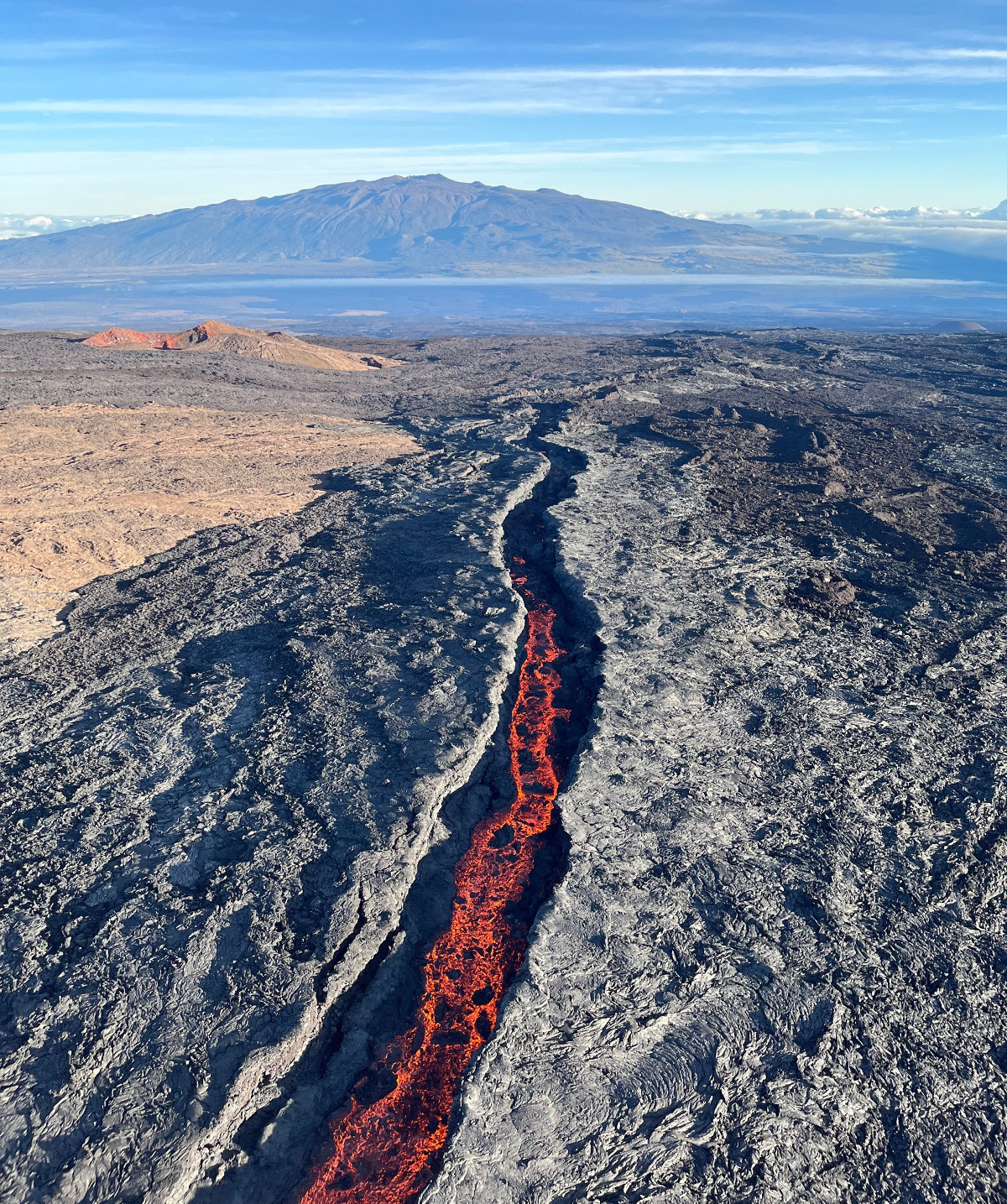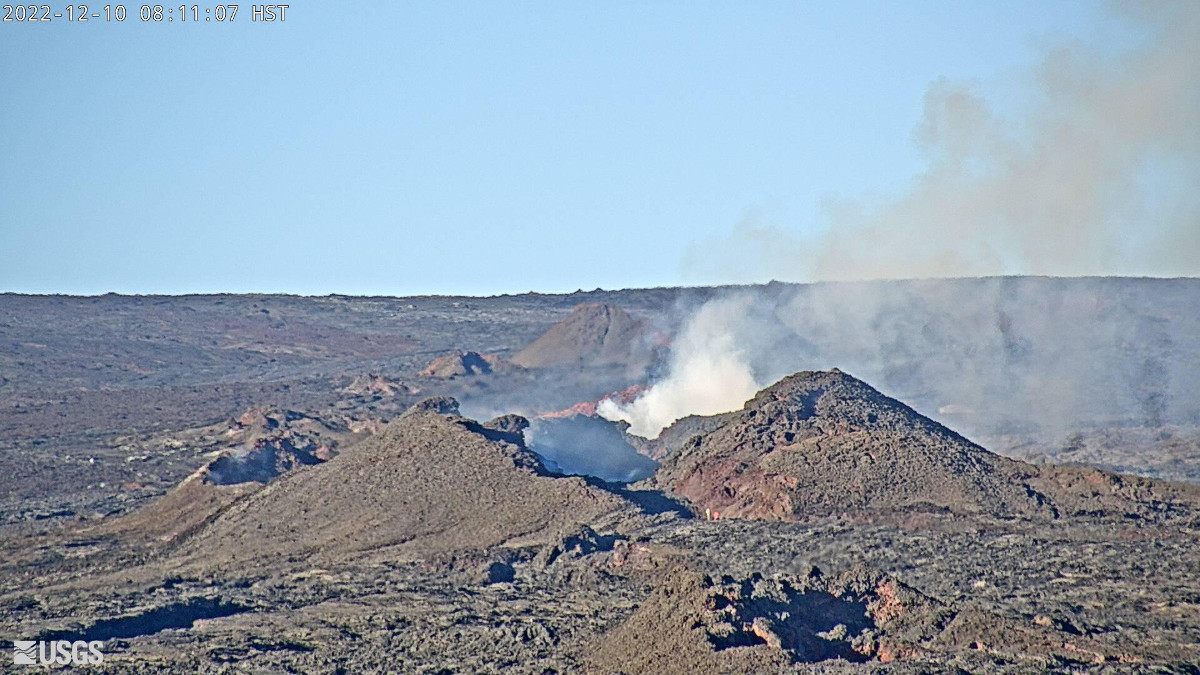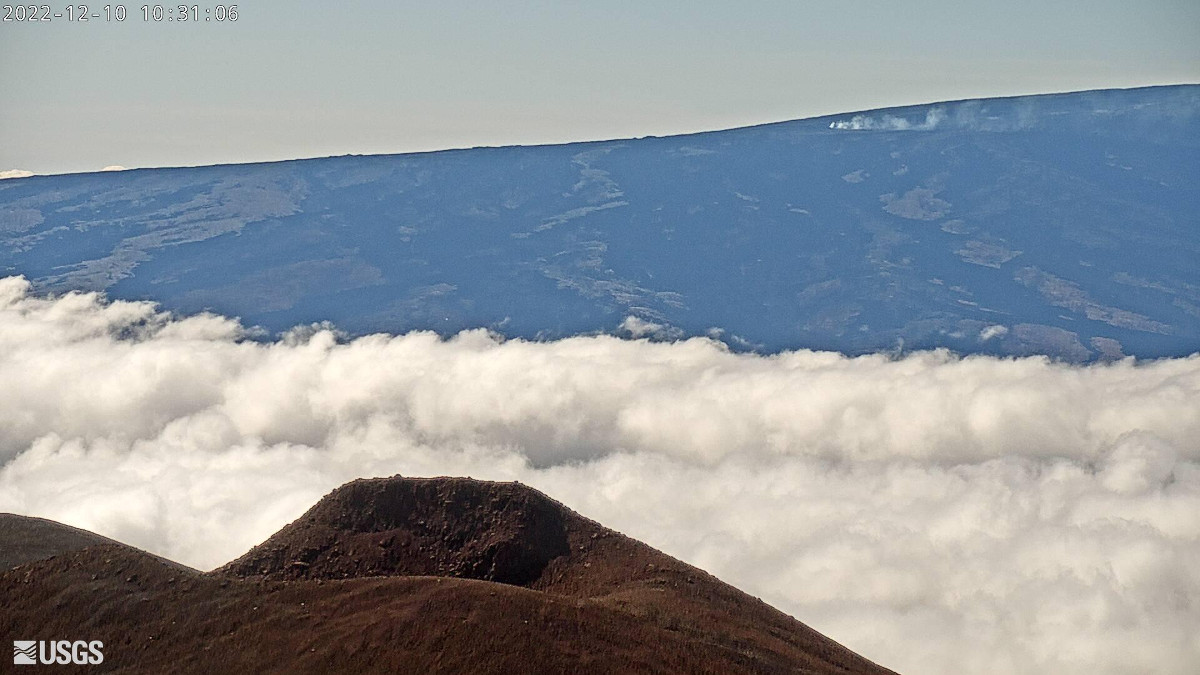
USGS: “Aerial image of the lava channel issuing from fissure 3, erupting high on the Northeast Rift Zone of Mauna Loa. The reduced lava output at fissure 3 is evident in the low level of lava in the channel. Mauna Kea is visible in the background of the image.” (USGS image by P. Dotray)
UPDATE – (10:30 a.m. on Saturday, December 10) – Several minutes after its morning activity update, the USGS Hawaiian Volcano Observatory issued a revised statement, noting there has been a “slow and steady decline” in tremor on Mauna Loa. The tremor is the signal associated with subsurface fluid movement. The decline in this signal “indicates that the magma supply to the vent is decreasing.”
(BIVN) – While the ruption of Mauna Loa volcano continues, the overall activity as of Saturday morning is greatly reduced.
From the USGS Hawaiian Volcano Observatory at 9:12 a.m. HST:
The Northeast Rift Zone eruption of Mauna Loa continues. The fissure 3 (F3) vent continues to erupt with a reduced supply of lava and reduced gas emissions this morning.
As of 7:00 a.m. today, December 10, a lava pond replaced the fountains at the F3 vent. The pond fed short lava flows that extended only 1.6 mi (2.6 km) from the vent but are already stagnating. The channels below this point appear drained of lava and no longer feed the main flow front.
The inactive main flow front remains stalled about 1.7 mi (2.8 km) from the Daniel K. Inouye Highway (Saddle Road) when last measured on the afternoon of December 8. When seen this morning at 7 am, the front appeared to be in the same location. The inactive main flow front still glows at night and may inch northward very slowly as it settles.
Sulfur dioxide (SO2) emission rates were also reduced to approximately 30,000 tonnes per day (t/d) as measured on December 8, 2022. The Hawaii Interagency Vog Information Dashboard has detailed information about vog. Forecasts for the dispersion of vog can be found on the VMAP Vog Forecast Dashboard.
Tremor (a signal associated with subsurface fluid movement) continues beneath the currently active fissure. This indicates that magma is still being supplied to the fissure, and activity is likely to continue as long as we see this signal.
The significance of the reduced supply of lava is not yet clear; it is common for eruptions to wax and wane or pause completely, but none of the 8 recorded eruptions from Mauna Loa’s Northeast Rift Zone returned to high eruption rates after those rates decreased significantly. Nevertheless, the Hawaiian Volcano Observatory continues to closely monitor the current activity.
There is no active lava within Moku’āweoweo caldera nor the Southwest Rift Zone. We do not expect any eruptive activity outside the Northeast Rift Zone.



by Big Island Video News9:36 am
on at
STORY SUMMARY
HAWAIʻI ISLAND - A lava pond now occupies the Fissure 3 vent on the Northeast Rift Zone, at the same location where lava fountains were previously erupting.